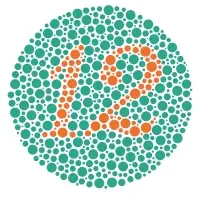What is color blindness (daltonism)?
Why don't some people see all colors the same?
Let’s talk science!
Mark, did you know that some people can't tell the difference between red and green?
Really? You mean... they see them as the same color?
Yes! Imagine not knowing if the traffic light is red or green. That could be a real problem!
Wow… how is that even possible? I thought everyone sees colors the same way.
Not really. Let's ask the teacher to explain!
The teacher explains
Color blindness (daltonism) is a condition where a person can't tell some colors apart — usually red and green. Our eyes have special cells called cones that detect light. There are three types of cones: for red, green, and blue. If one of these doesn’t work properly, the brain doesn’t get the right signals, and the person can’t see all colors clearly.
Cool fact: it’s like how computers work!
Screens on phones and computers use the same idea — they show colors by combining red (R), green (G), and blue (B) light. This is called the RGB model. Just like our eyes, they mix these three lights to create all the colors we see.
Who has color blindness?
Around 8% of boys and less than 1% of girls have some form of color blindness. It’s usually inherited through genes. There’s no cure, but people with this condition can live totally normal lives.
Fun facts
- Some insects can see more colors than humans — even ultraviolet light!
- There are special glasses that help some people see colors better — but they don’t work for everyone.
- Color blindness is named after John Dalton (1776–1844), an English scientist who had this condition himself. You’ll hear more about him in our lesson on atoms. 🙂
- If humans had a fourth type of cone in the eye, we could possibly see new colors — even beyond violet!
What is the Ishihara test?

Search online for images made of colorful dots that hide a number — those are called Ishihara tests. If the number is hard to see, you might have mild color blindness (or maybe your screen is just too dark 😊).
